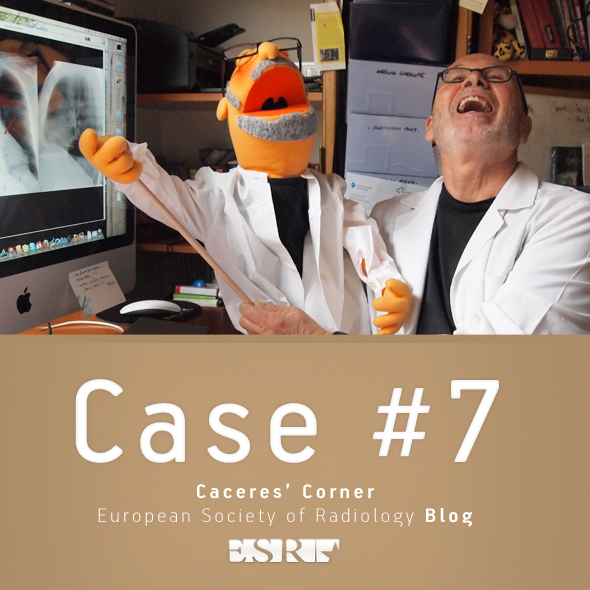
Dear friends,
Presenting a case chosen by the Muppet (beware: he is devious!).
Radiographs and face picture of a 52-year-old woman admitted to the emergency room with dyspnea. Radiographs before and after thoracentesis.
Chest radiograph seven years earlier (not available) reported as possible thymoma. No treatment since.
Diagnosis:
1. Thymoma
2. Schwannoma
3. Fibrous mesothelioma
4. Hydatid cyst
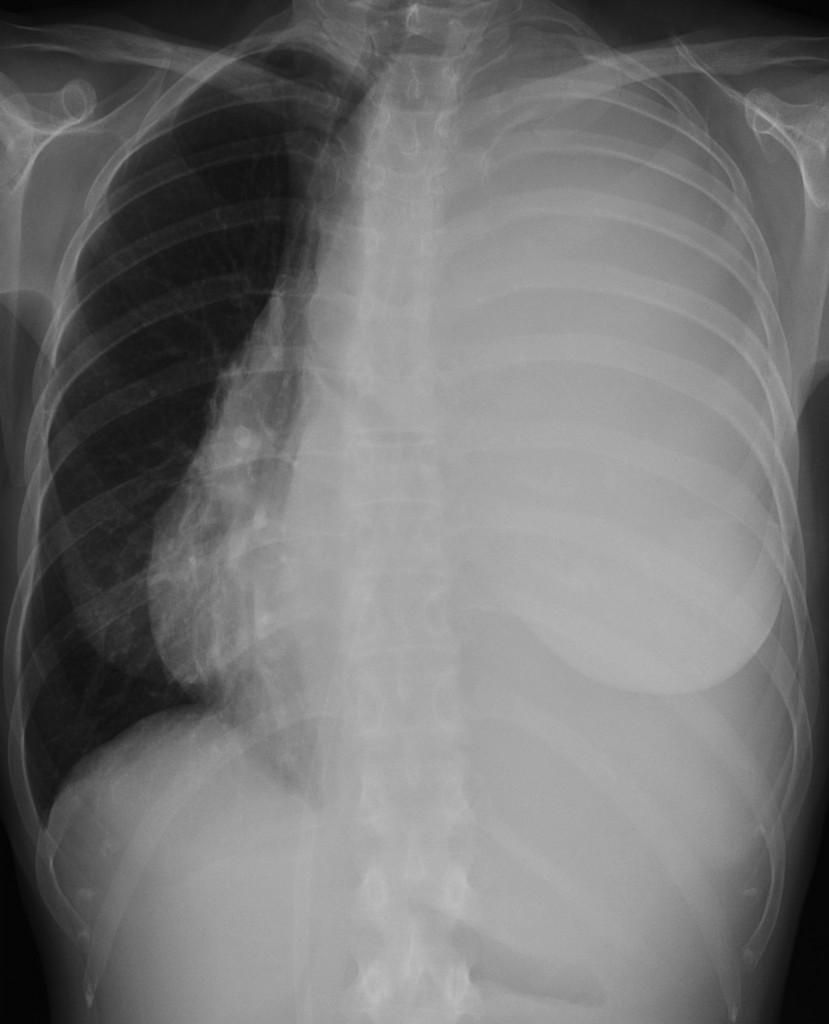
chest, 52 year old female (PA)
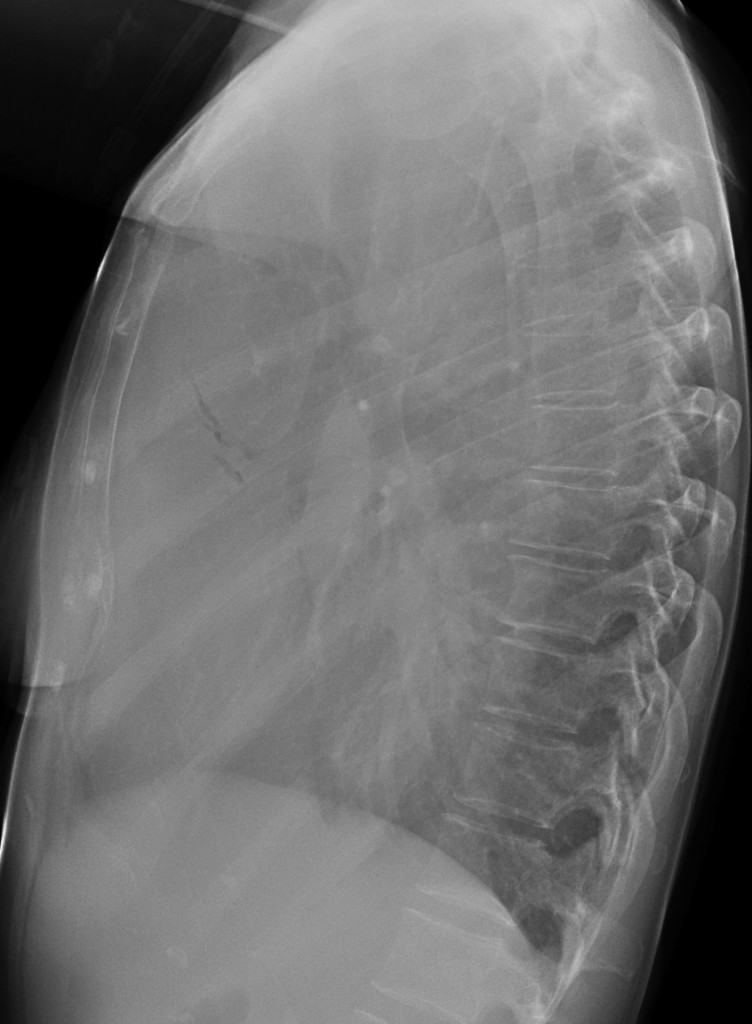
chest, 52 year old female (lateral)
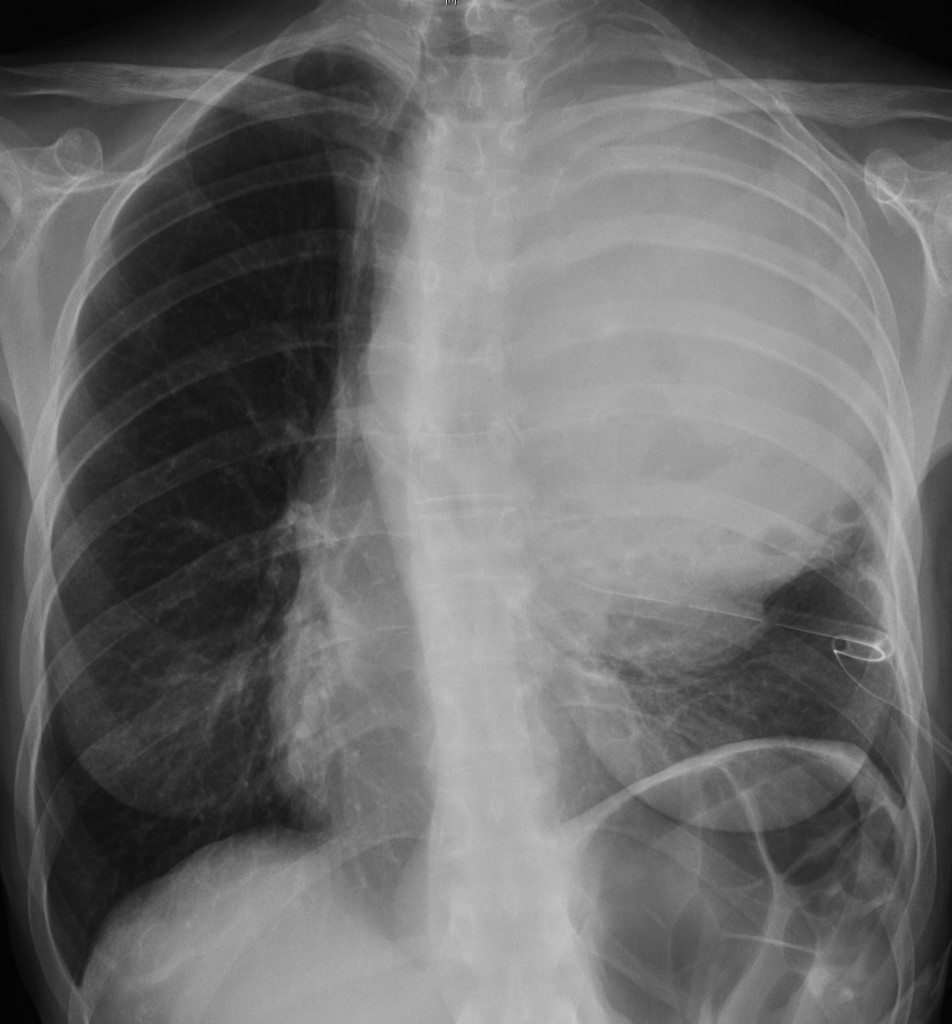
chest after thoracocentesis, 52 year old female (PA)
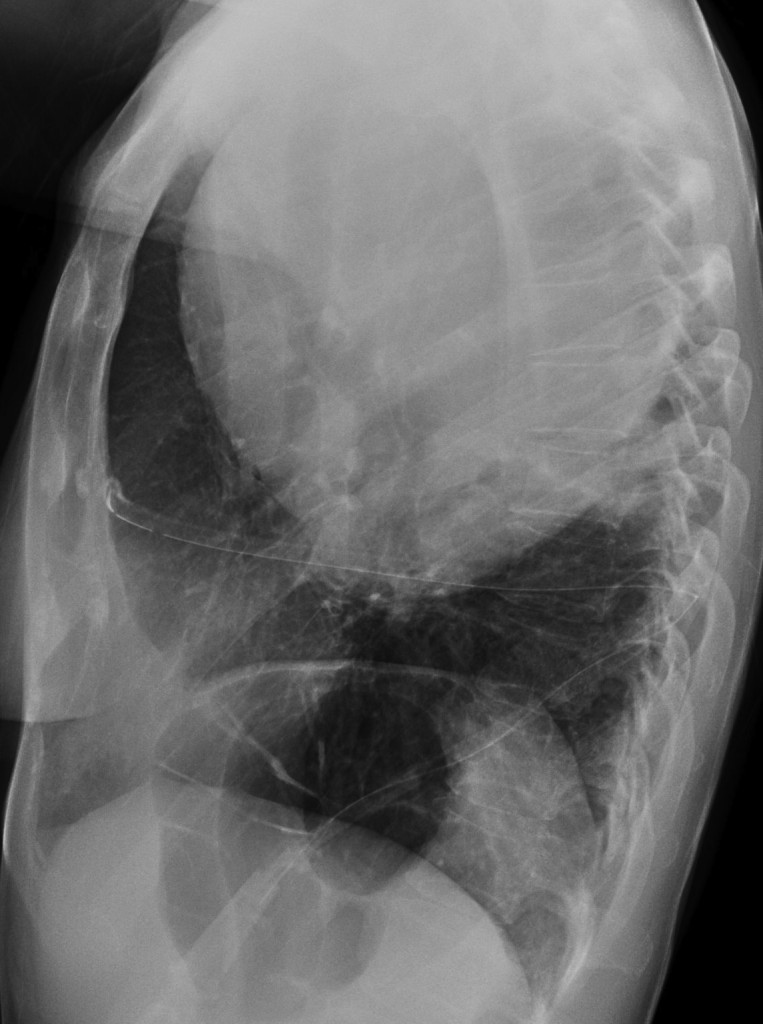
chest after thoracocentesis, 52 year old female (lateral)

photo
Click here for the answer to case #7
The initial radiographs show massive pleural effusion. After thoracentesis a huge mass is seen. Enhanced CT confirms the presence of the mass, without any specific characteristics. There is no bone erosion.
Diagnosis is suggested by the heterochromia iridis, a finding associated with cervical neurogenic tumours, which may affect the sympathetic system, responsible for eye colour. Operative diagnosis: schwannoma.
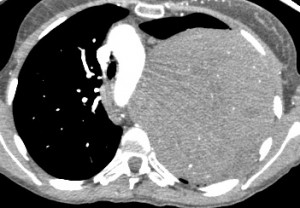
Axial CT
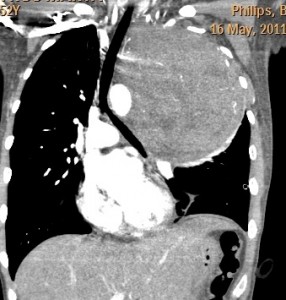
Coronal CT
We saw a similar case about fifteen years ago. We didn’t know what it was, but searched the web and came out with the correct answer. When we found this recent case, the diagnosis was evident. Muppet is disappointed that you didn’t notice the heterochromia iridis and promises not to do it again… until the next time (told you he is devious and likes to play dirty!)
Teaching point: the apex of the lung is a small space. In the presence of a large apical mass it is very difficult to determine its origin (pleural, pulmonary or mediastinal). Sometimes other findings (heterochromia in this case) point to the correct diagnosis.










Well.. First the color photo: Claude Bernard Horner syndrome (according to my {fast becoming} old clinical knowledge).
Now for those difficult black and white photos… I’d bet on a left lobulated mediastinal mass with point of origin at posterior mediastinum, but spreading much much anteriorly. Pleural effusion cleared after drainage, but tip is placed basal anterior; for the source of the drainage, chillous origin should be easily confirmed with analysis of the fluid drained. Left hemidiaphragmatic palsy is (probably) due to compression of the left phrenic nerve by the tumor.
Very nice case… i’m curious to se what is right from what i said.
Of course recommend CT, maybe a barium swallow.
probably hydatid cyst…dyspnea and hyperreaction due to rupture of it,with pleural exsudat,eritema of the skin, and Honer sy. due to slow-rise neural compresion…no pleural plaques and calcification/no mesothelioma/,retrosternal space is free after drainage/no thymoma/and no schwannoma-that big tumor must make uzures of the vertebral bodys
Hydatid cyst
1- Thymoma – a tumor that occupies the anterior mediastinal space, or on the lateral incidence the retrosternal space clear. So, no thymoma.
2- Schwannoma – a tumor of the posterior mediastinal space, but I see no vertebral changes and no mass effect from posterior.There is a lateral mass effect and a little rotation of the trachea- that makes me think of a formation that lies in the pulmonary parenchyma.
3- Fibrous mesothelioma – no tipical modiffication
4- Hydatid cyst – my diagnose.
diagnosis :
1.Thymoma
hmmm… I think about hydatid cyst and Horner’s syndrome 🙂
Fibrous mesothelioma
mediastinal hydatid cyst causing horner’s syndrome and phrenic nerve palsy and pleural effusion
I am also for the hydatid cyst and Horner’s syndrome, but doesn’t the patient have some cafe au lait spots as well?
Mupet says: none of you have mentioned that the patient has eyes of different color!
did notice that but could not find any results on the net.
-mass probably arising in the upper 2/3rds of major fissure(as seen on the lateral view) with associated pleural effusion and mediastinal shift to the opposite side.
-photograph shows anisocoria either due to the involvement of sympathetic fibres at the lung apex with resultant sympathetic overactivity/paraneoplastic in origin.
-resection of right lower rib, possibly post op change.
Possibilities are
-pleural recurrence of thymoma with adjacent pleural effusion
-pleural mesothelioma.
Possibilities are :
–
acute angle between thoracic wall and Tumor like shadow,after thoracal drainage sugested,this is not a pleural pathology…thats the fact
angles are just guidelines,they are not axioms.
but helps in ddx. 🙂
Sorry, I have to act as moderator. In this particular case I don’t think the plain films findings help to determine the origin of the mass. Once the mass is discovered, the next diagnostic step is a CT and probably a percutaneous biopsy. (Muppet agrees ;-)))
sir during my radiology residency we had dicussed an exactly similer case in our department but minus the pleural effusion.we had made a diagnosis of extrapleural mass probably arising from the posterior chest wall and the histopath had come as schwanomma. presence of pleural effusion in this case was the confounding factor. and bony changes may not be found in neural tumors which are away from the paaravertebral gutter.(e.g., exophytic schwannoma arising from the intercostal nerves.)
Heterochromia is associated to neuroblastoma…
Good! Muppet is delighted!
Judging the lateral film after thoracocentesis I would say it is an intrapulonary process ( sharp edges of the surrounding lung). That would exclude schwannoma and thymoma. The latter one would also occupy at least part of anterior mediastinum and this one seams to be clear. I haven’t noticed at a first glance the differnet iris colour of her eyes ( thank you prof Caceres). I started digging after the Horner’s syndrome and found out that in children it sometimes leads to heterochromia. That would mean it is a long-lasting process. So hydatid cyst? No previous X-ray films to compare?
but why the bronchi are so narrow?
The lung is compressed by the huge mass.
hmmm…
Lung expanded completely after removal of the mass. Can send you a post-op chest if you wish.